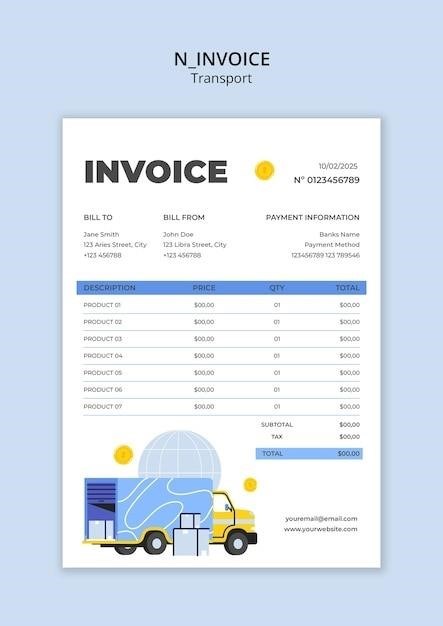What is an Equipment Bill of Sale?
An equipment bill of sale is a legal document that outlines the details of how a transaction happened. It is typically used for valuable or rare items, although it can be completed for any object.
Definition and Purpose
An equipment bill of sale is a general-use document that records the purchase and sale of any valuable piece of equipment. It serves as a written record of the transaction, outlining the details of the sale, including the description of the equipment, the purchase price, and the terms of payment. It’s crucial for transferring ownership legally and protecting both the buyer and the seller from potential disputes or misunderstandings.
Common Uses
This form is commonly used for kitchen equipment, office tools and machinery, and entertainment devices. It’s also useful for transactions involving heavy machinery, farm tools, vehicles, boats, motorcycles, and other valuable personal property. The bill of sale provides a clear record of the transaction, making it easier to prove ownership and resolve any disputes that may arise in the future.
Key Components of an Equipment Bill of Sale
A well-structured equipment bill of sale includes essential information to ensure a clear and legally sound record of the transaction.
Seller and Buyer Information
The bill of sale must clearly identify both the seller and the buyer. This includes their full legal names, addresses, and contact information, such as phone numbers and email addresses. It is crucial to ensure that the names and addresses match official records for legal purposes. If a business entity is involved, the business name, registration number, and contact details should be included. This section establishes the parties involved in the transaction and ensures that both the seller and the buyer are properly identified.
Equipment Description
This section provides a detailed description of the equipment being sold. It should include the make, model, year, serial number, and any other identifying features. A clear and accurate description helps avoid confusion and ensures that both parties are aware of the exact equipment being transferred. It is also helpful to include the condition of the equipment, such as whether it is new, used, or refurbished. If the equipment has any specific features or attachments, those should be listed as well. This thorough description serves as a reference point for future identification and prevents disputes about the equipment itself.
Purchase Price and Payment Terms
This section clearly states the agreed-upon purchase price for the equipment. It can be expressed as a single lump sum or as a series of payments. If payment is made in installments, the payment schedule should be outlined, including the amount of each payment, the due dates, and any applicable interest rates. The payment method should also be specified, whether it is cash, check, bank transfer, or other means. This section ensures both parties understand the financial aspects of the transaction and prevents misunderstandings about the payment terms.
Warranty and Condition of Equipment
This section is crucial for outlining the condition of the equipment at the time of sale. It can include a description of any known defects or issues, as well as any warranties being offered by the seller. If the seller is providing a warranty, the duration of the warranty, the types of coverage, and any limitations should be clearly stated. This section protects both parties by setting expectations about the equipment’s condition and any potential responsibilities for repairs or replacements.
Signatures and Dates
The final step in completing an equipment bill of sale is the inclusion of signatures and dates. Both the buyer and seller must sign the document, indicating their agreement to the terms outlined. The date each party signs is also essential for establishing the date of the transaction. In some cases, a witness may also be required to sign the document, especially if the transaction involves a significant amount of money. These signatures and dates ensure that the bill of sale is legally binding and provides proof of the transaction.
Benefits of Using an Equipment Bill of Sale
Using an equipment bill of sale offers several advantages for both the buyer and seller.
Transfer of Ownership
The primary benefit of an equipment bill of sale is its ability to legally transfer ownership of the equipment from the seller to the buyer. This document acts as proof of purchase, demonstrating that the buyer has acquired the right to possess and use the equipment. The bill of sale provides a clear record of the transaction, leaving no room for ambiguity regarding who owns the equipment. This is particularly important for expensive or unique equipment, ensuring that the buyer’s ownership is recognized and protected.
Legal Protection
An equipment bill of sale offers legal protection for both the buyer and the seller. For the buyer, it serves as evidence of ownership, protecting them from claims of theft or fraud. If a dispute arises regarding the equipment, the bill of sale provides a written record of the transaction, supporting the buyer’s claim to rightful ownership. For the seller, the bill of sale provides a record of the sale, demonstrating that they have relinquished ownership and received payment. This protects the seller from future liability related to the equipment.
Record Keeping
An equipment bill of sale serves as a valuable record of the transaction, providing a clear and detailed account of the sale. It includes information such as the names and addresses of the buyer and seller, a description of the equipment, the purchase price, and the date of the sale. This documentation is essential for tax purposes, as it helps to track the sale of equipment and calculate capital gains or losses. It also aids in maintaining accurate financial records and can be used for insurance purposes if needed.
Where to Find Equipment Bill of Sale Templates
Numerous resources offer free and paid equipment bill of sale templates, making it easy to find a suitable option for your needs.
Free Online Templates
Many websites offer free downloadable equipment bill of sale templates in various formats, such as PDF and Word documents. These templates can be easily customized to suit your specific needs. Popular online resources include legal websites, template websites, and government websites. These templates often include basic information sections, such as seller and buyer details, equipment description, purchase price, and payment terms. They can be easily adapted to meet the specific requirements of the transaction.
Commercial Template Providers
For more comprehensive and legally sound equipment bill of sale templates, consider using commercial template providers. These services typically offer a wider range of templates, including specialized options for specific types of equipment. They often provide access to legal experts who can review and customize templates to meet your specific needs. While commercial providers usually charge a fee for their services, they can be valuable for ensuring legal compliance and protecting both the buyer and the seller.

Tips for Completing an Equipment Bill of Sale
Completing an equipment bill of sale accurately and thoroughly is crucial for a smooth and legally sound transaction.
Accuracy and Clarity
Ensure all details are accurate and complete. Clearly describe the equipment being sold, including make, model, serial number (if applicable), and any unique features. Avoid using ambiguous language or abbreviations. The clearer and more detailed the information, the less likely it is to lead to confusion or disputes later on.
Legal Review
If the transaction involves a significant amount of money or complex equipment, it’s highly recommended to have the bill of sale reviewed by a legal professional. This ensures the document is legally sound and protects both the buyer and seller. A lawyer can help identify any potential loopholes or ambiguities that could lead to legal disputes in the future.
Proper Storage
Once the equipment bill of sale is signed and completed, it’s crucial to store it in a safe and accessible location. This could be a fireproof safe, a lockbox, or a dedicated file folder. Make sure to keep a copy for both the buyer and the seller. Having a well-organized system for storing these documents will make it easier to retrieve them if needed in the future, especially if there are any legal disputes or insurance claims.


